The 3-4-2-1 Formation Explained
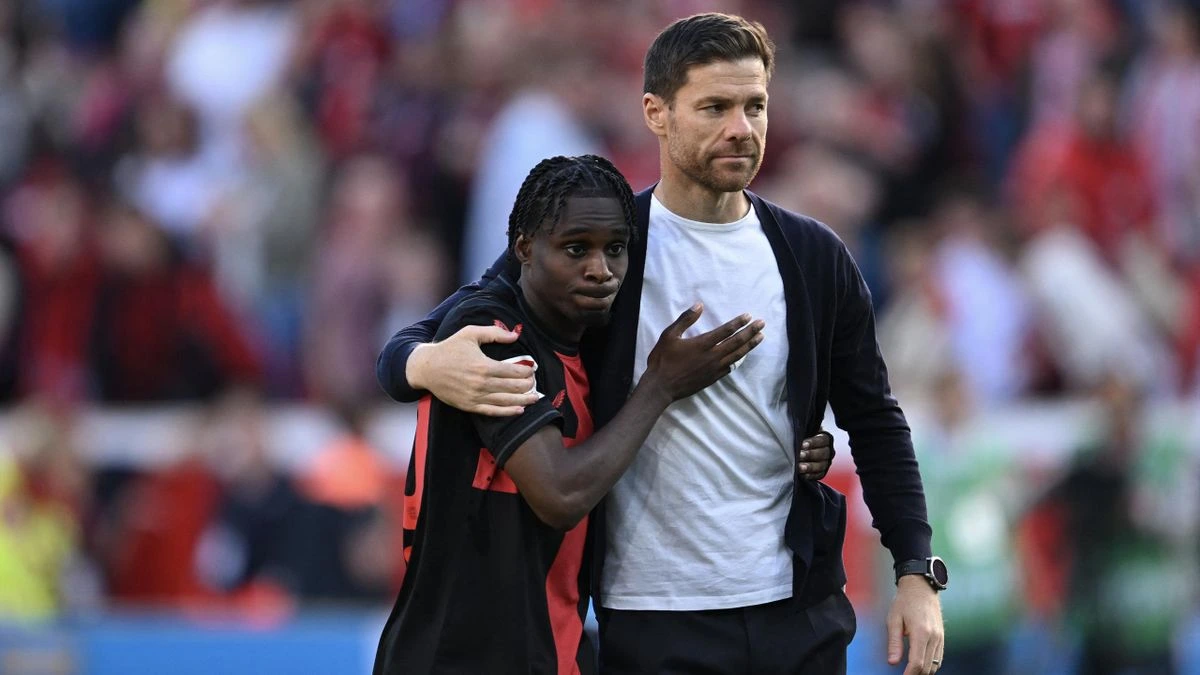
The 3-4-2-1 formation has become one of the most interesting tactical setups in modern football. Used by tacticians like Ruben Amorim at Manchester United, Xabi Alonso at Bayer Leverkusen, Roberto De Zerbi at Marseille, Gian Piero Gasperini at Atalanta, and Claudio Ranieri at Roma, this formation blends attacking fluidity with defensive stability. Its ability to take advantage of space and dominate half-spaces has made it increasingly popular. But what makes it so effective, and how can teams maximize its potential?
Table of Contents
What is the 3-4-2-1 Formation?
Basic Structure: The 3-4-2-1 consists of three center-backs, two wing-backs, a double pivot in midfield, two central attacking midfielders (CAMs), and a lone striker. The shape offers defensive solidity while allowing dynamic and fluid movement in attack. Similar to the 4-3-3 formation, you have equal distribution on both the width and the length of the pitch.
Core Principles:
- Compactness in defense.
- Overloads in central and wide areas.
- Quick transitions and fluid positional play.
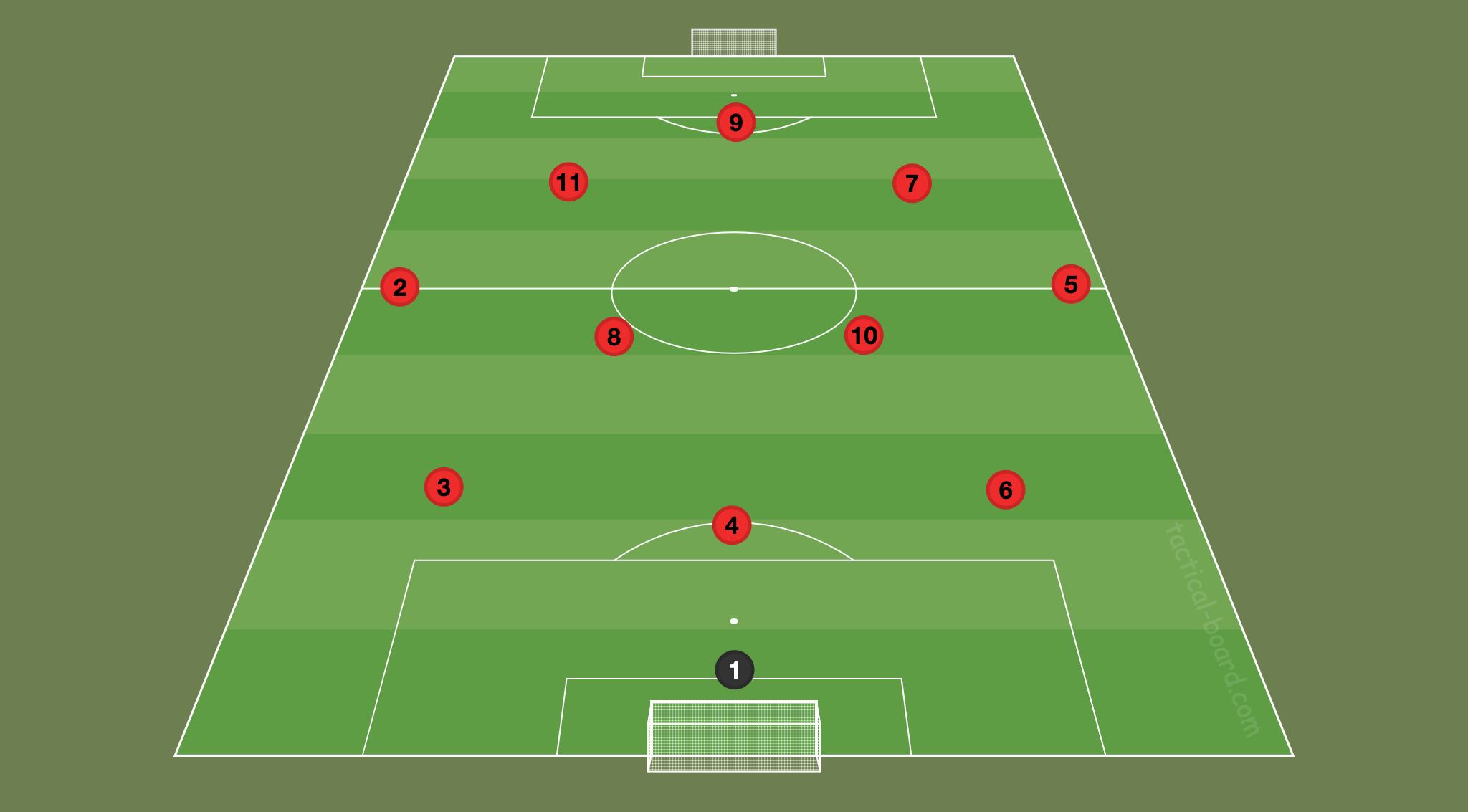
Why is the 3-4-2-1 Formation Becoming Popular?
- Flexibility: This formation easily adapts to different phases of play. For instance, wing-backs like Frimpong (Leverkusen) or Luis Henrique (Olympique Marseille) act as wingers in attack and defenders in transition.
- Pressing Systems: Managers such as Xabi Alonso use this system to apply high pressing effectively, leveraging the two CAMs like Wirtz (Bayer Leverkusen) to disrupt opposition build-up play.
- Space Utilization: With two CAMs positioned in the half-spaces, teams can create a numerical overload, as shown in the image below with de Ketelaere (17), Lookman (11) and Pasalic (8) at Atalanta.
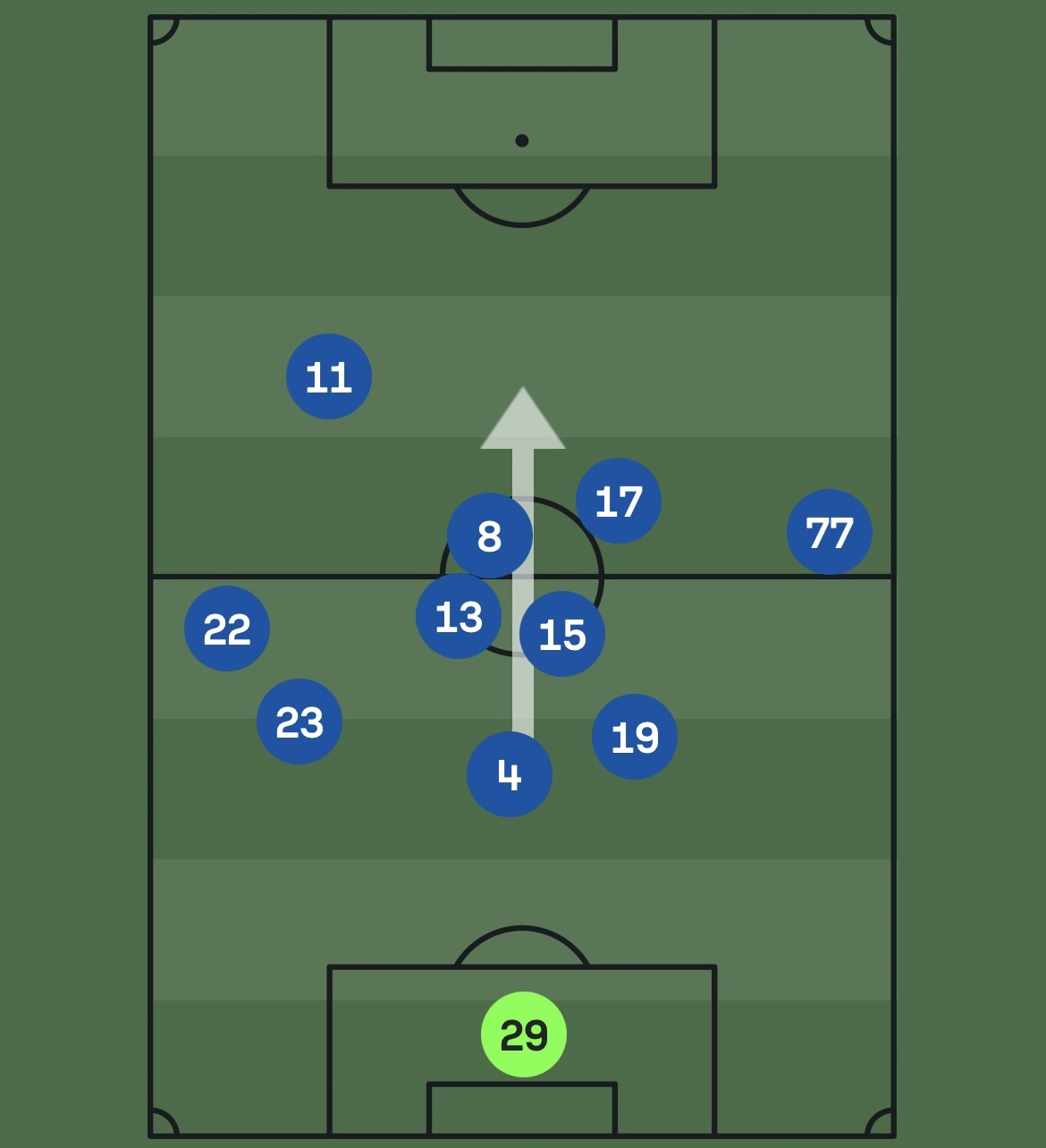
Strengths of the 3-4-2-1 Formation
In this case we will use Bayer Leverkusen’s match against Freiburg as an example, the strengths of the 3-4-2-1 formation were clearly demonstrated. The formation and the way it was executed enabled Leverkusen to dominate possession and create numerical superiority in central areas while maintaining width and depth on the flanks.
- Overloading central areas: The presence of two CAMs allows teams to dominate the midfield, as showcased by Bayer Leverkusen’s Wirtz (10) and Tella (19) by creating a box on the midfield with Xhaka (34) and Palacios (25).
- Width from wing-backs: Frimpong (30) and Grimaldo (20) provided width and depth, stretching the opposition defense.
- Defensive solidity: The back three ensures stability, especially with a sweeper-like center-back such as Tah (4) or Tabsoba (12) who are excellent in reading the game.
- Tactical versatility: Teams can shift to a 5-4-1 in defensive phases where the wing-backs will drop deeper or a 3-2-5 in attack where the wing-backs will push up higher.
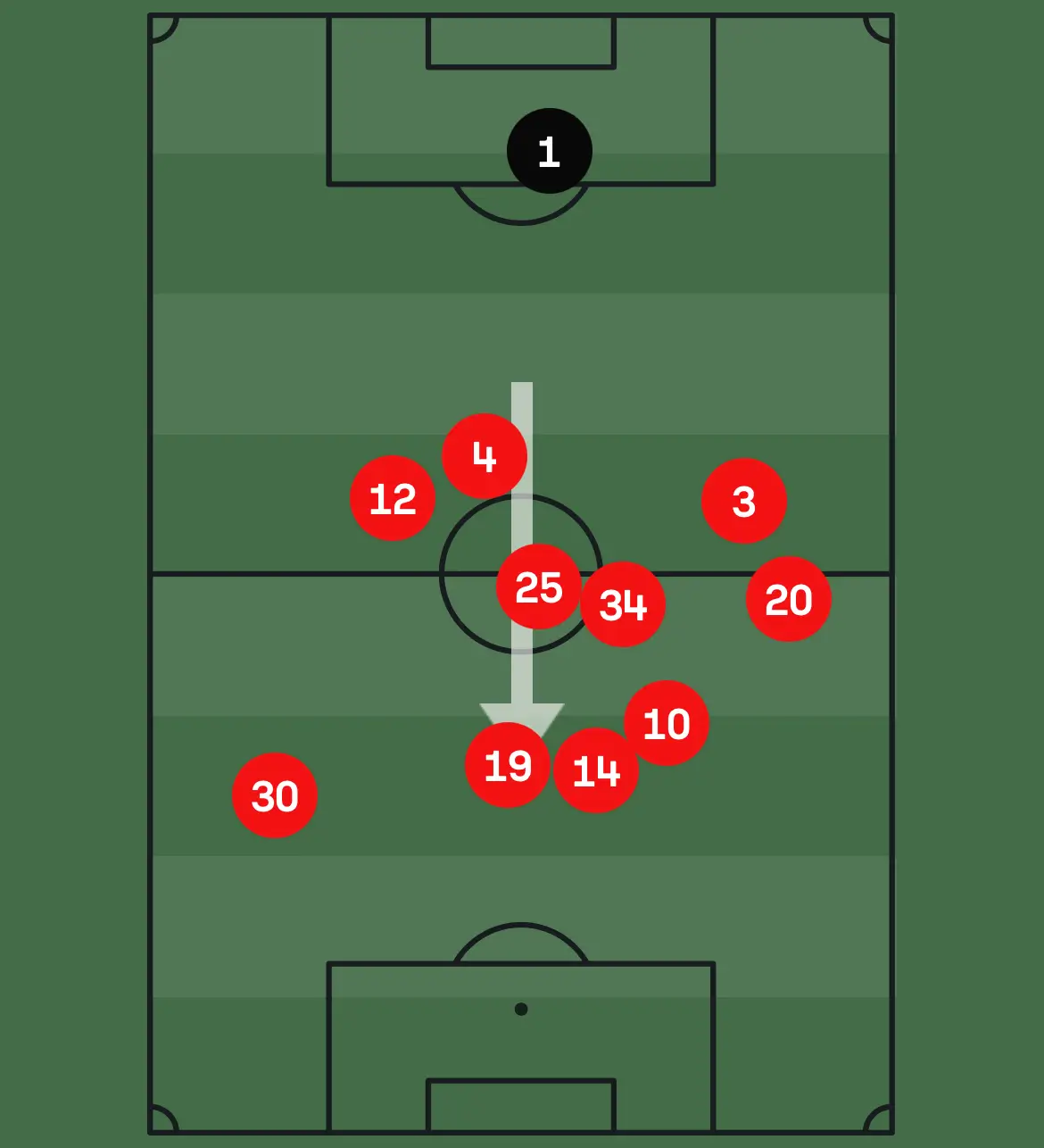
Weaknesses of the 3-4-2-1 Formation
- Vulnerability in transitions: When wing-backs are caught too high, the flanks can be exposed, leaving the three center-backs to defend the entire width of the pitch.
- Gaps between lines: Poor communication between the double pivot and the back three can result in spaces that skilled attacking midfielders exploit. For example, when the back three fails to push up in tandem with the midfield, players who can play in between the lines like Ødegaard or Foden can find pockets of space to create dangerous chances for their teams.
- Reliance on a lone striker: Teams often depend heavily on their striker to convert chances. At Atalanta, Retegui thrives in this role, while Manchester United looks to Højlund. When creative CAMs like Wirtz (Leverkusen), Greenwood (Marseille), or Diallo (Manchester United) possess the ability to exploit half-spaces (or channels), they can reduce the burden on the striker and create more goal-scoring opportunities for their striker or themselves.
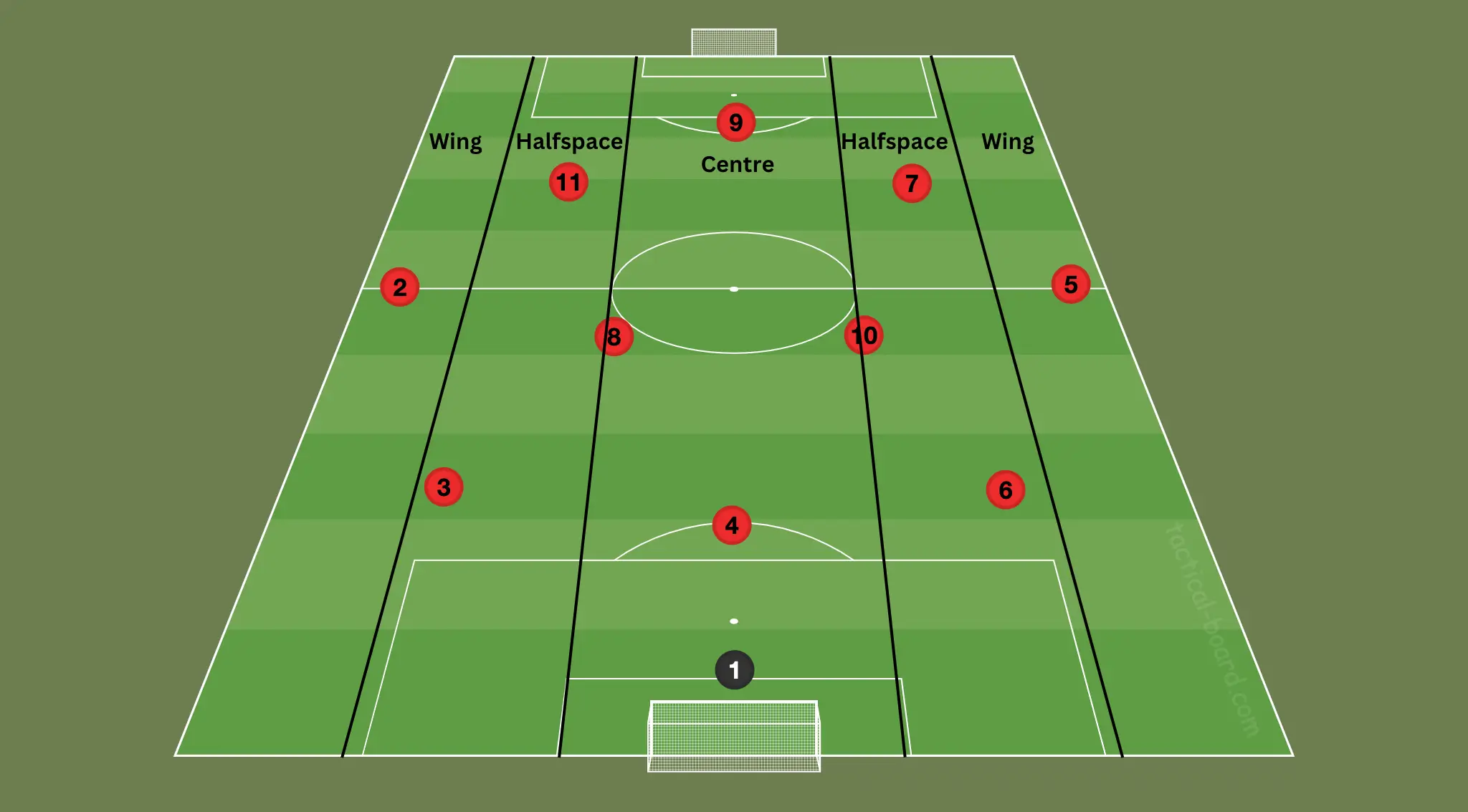
Key Player Profiles for Each Position
Goalkeeper
- Traits: Comfort on the ball, quick and accurate distribution.
- Examples: Verbruggen (Brighton), Ederson (Manchester City) or Alisson (Liverpool)
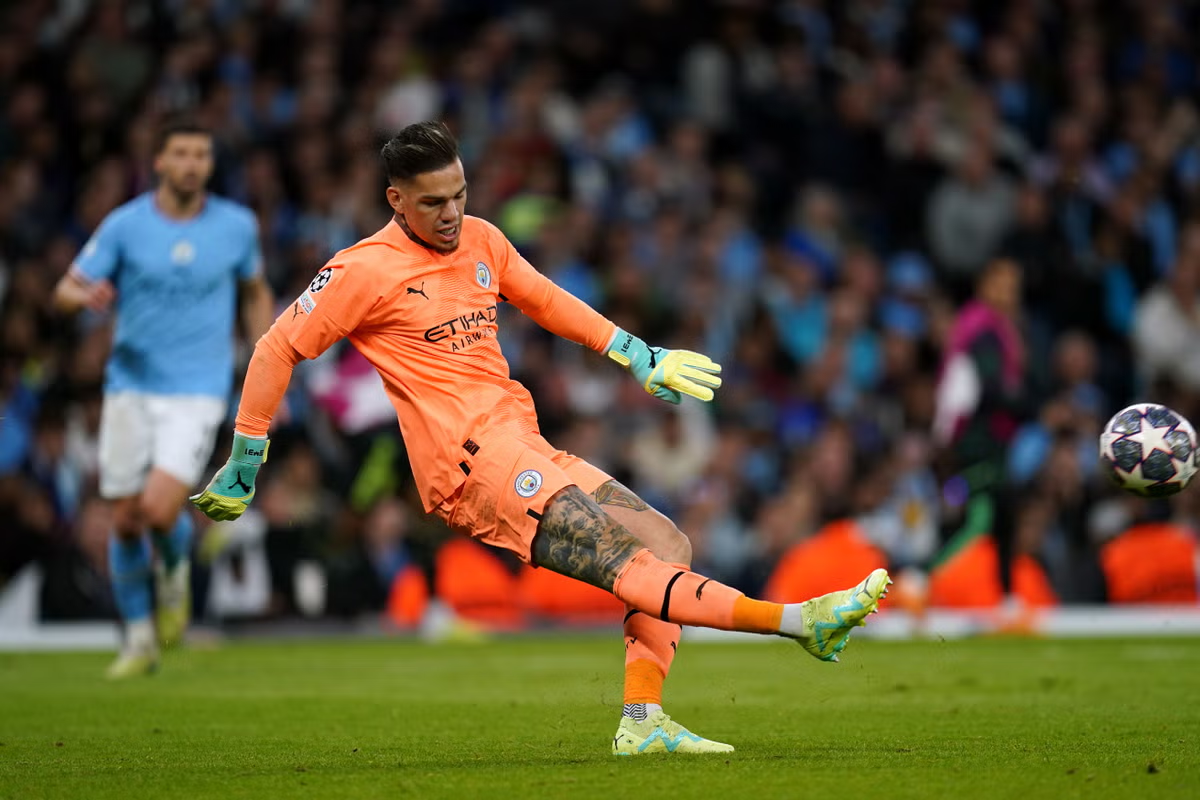
Centre-Backs
- Traits: Strong in aerial duels, good ball-playing ability, ability to read the game.
- Examples: Aké (Manchester City), Bastoni (Inter Milan), van Dijk (Liverpool).
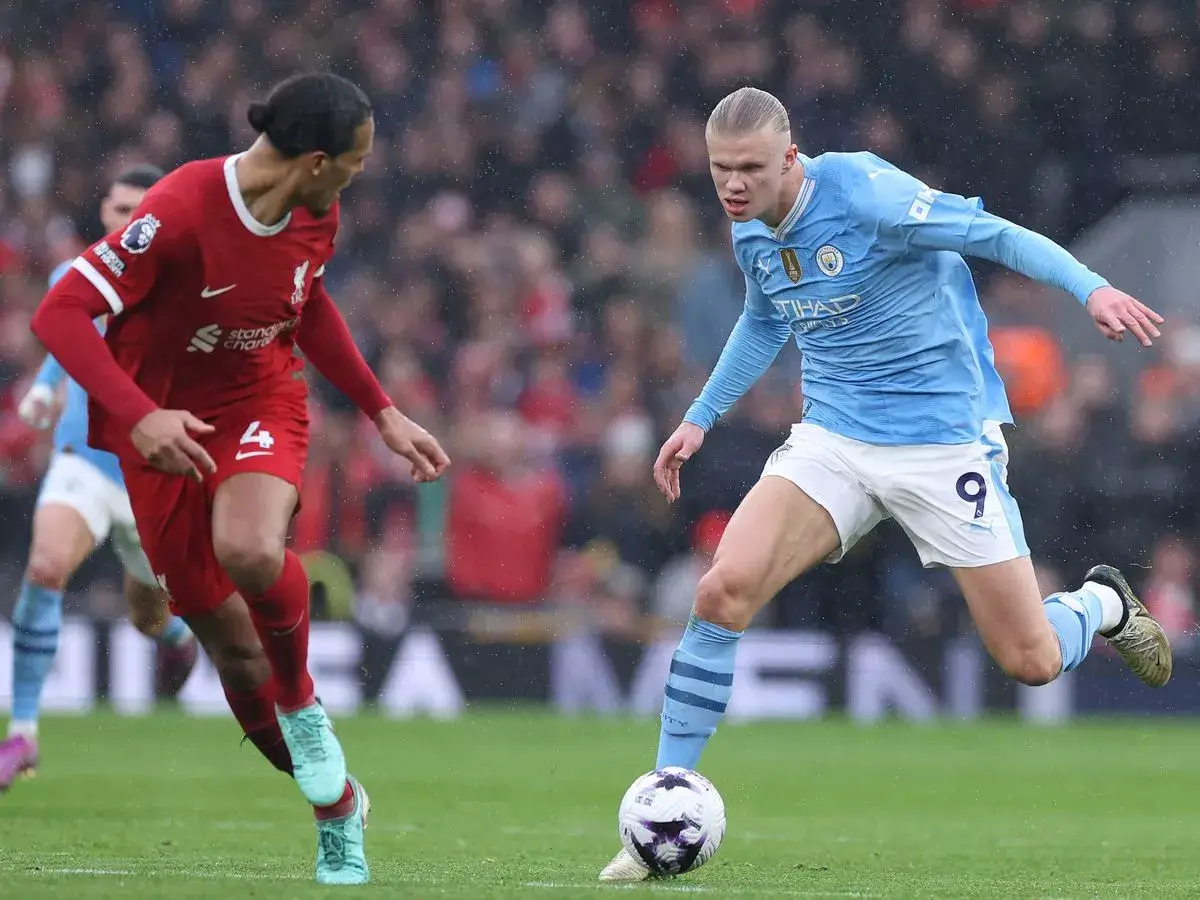
Wing-Backs
- Traits: High stamina, crossing ability, quick transition, defensive awareness.
- Examples: Frimpong (Leverkusen), Dimarco (Inter) for attacking dynamism, Merlin (Olympique Marseille) or Dumfries (Inter) for balanced play.
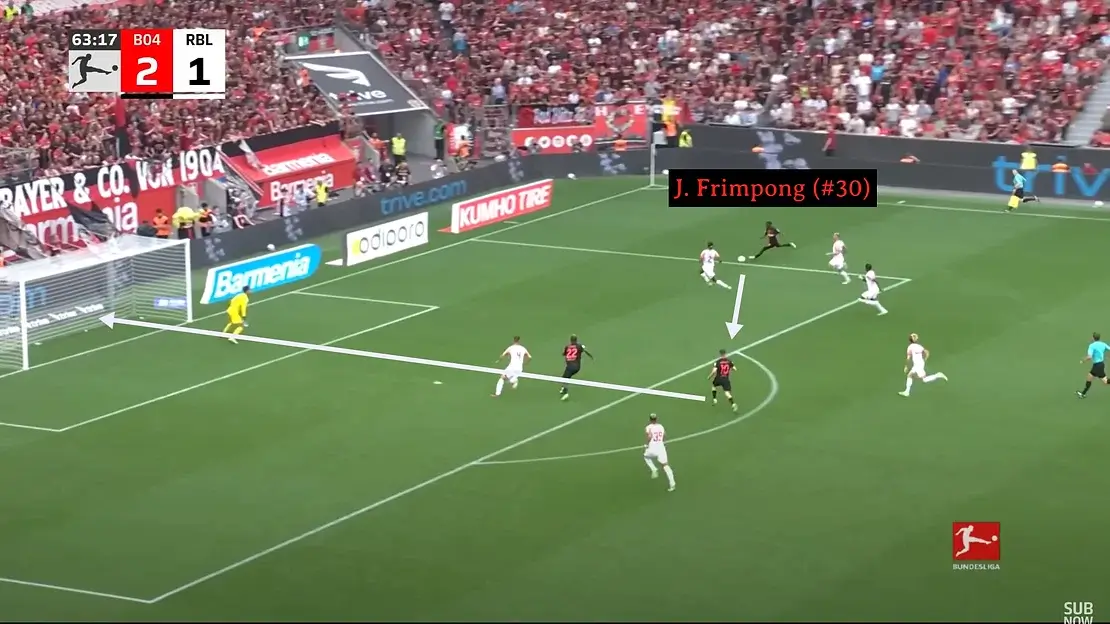
Double Pivot
- Traits: A mix of a ball-winner and a playmaker.
- Examples: Xhaka and Palacios (Leverkusen), Pedri and Casado (Barcelona) or Kimmich and Goretzka (Bayern Munchen)
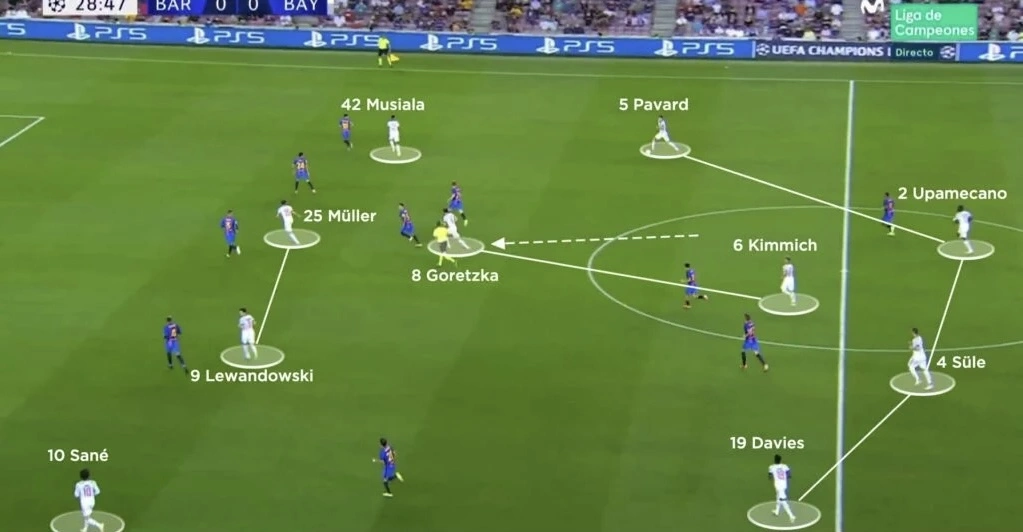
Two CAM’s
- Traits: Technically skilled, able to exploit half-spaces, great passers.
- Examples: Wirtz (Leverkusen), Fernandes (Manchester United), Foden (Manchester City)
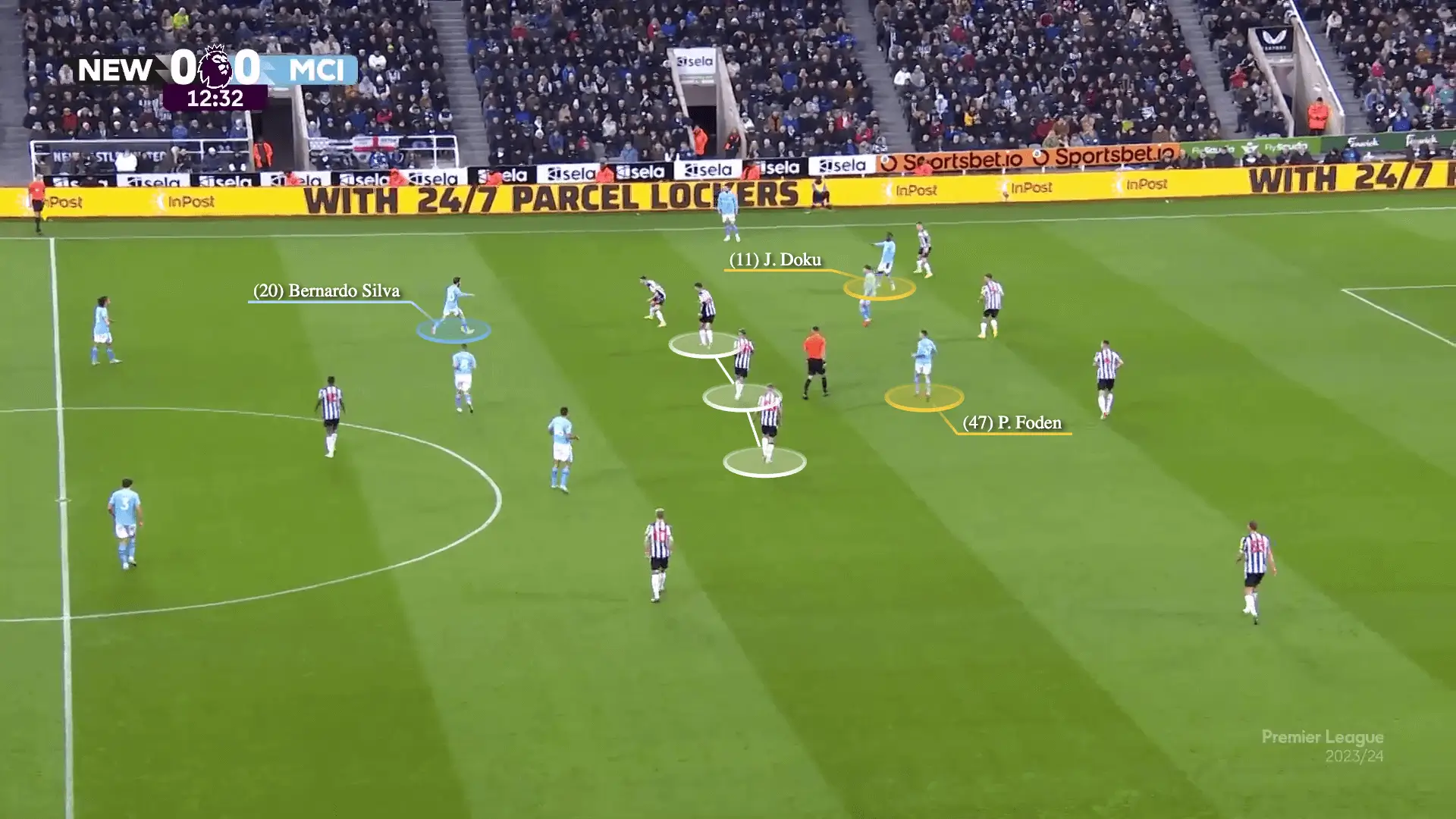
Lone Striker
- Traits: Versatile: can be a target man, false nine, or goal scorer.
- Examples: Kane (Bayern Munchen) for playmaking, Boniface (Leverkusen) or Retegui (Atalanta)
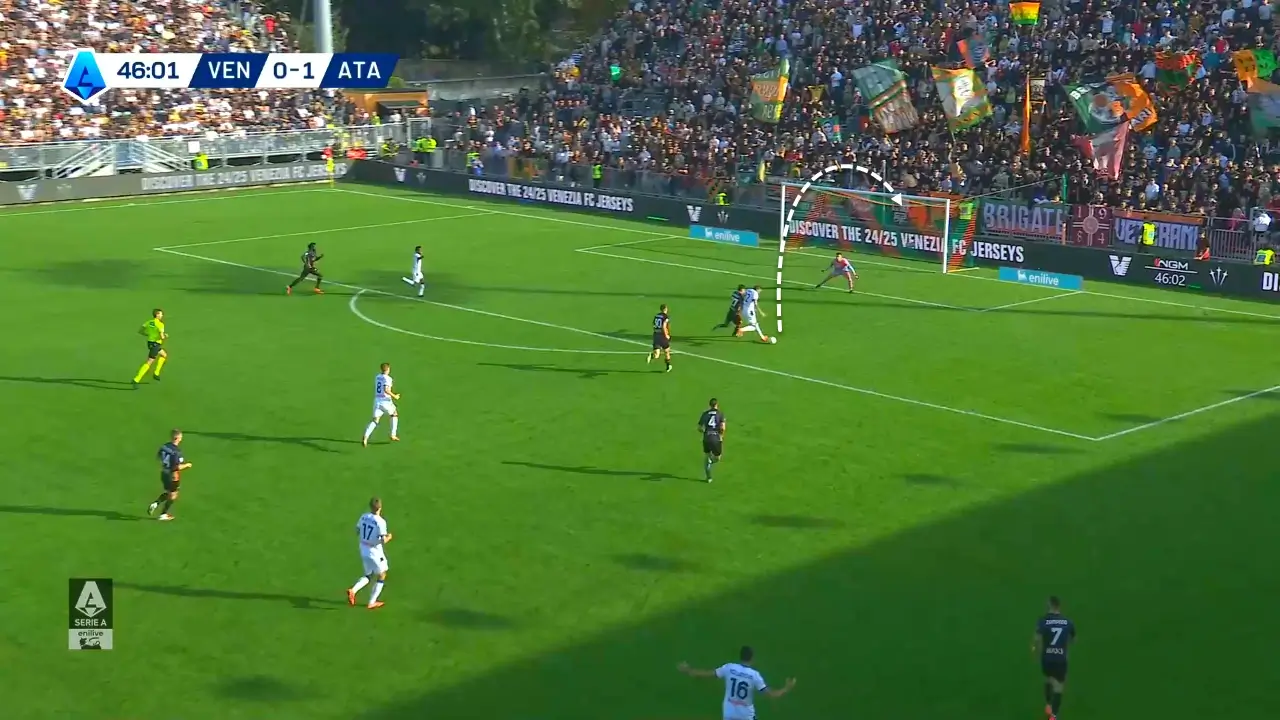
Variations of the 3-4-2-1 Formation
- Hybrid Systems: Teams often go into a 3-2-4-1 in possession or a 5-2-2-1 or even a 5-4-1 during defensive phases.
- Positional Rotations: Inverted wing-backs (higher up the pitch) or CAM’s dropping deep can create unpredictable movements, as seen with Leverkusen under Alonso. Frimpong or Grimaldo would often pop up in the half spaces when they see the opportunity.
Conclusion
The 3-4-2-1 formation offers a blend of defensive solidity, attacking fluidity, and tactical versatility. While it has its weaknesses, the right players and tactical tweaks can reduce them. Whether it’s the creativity of Wirtz, the dynamism of Frimpong, or the defensive stability of Bastoni, this system has the potential to dominate modern football. What are your thoughts on the 3-4-2-1? Share them in the comments or join the conversation on our Instagram!

2 thoughts on “The 3-4-2-1 Formation Explained”
A very good insight and a great read for anyone who is interested in how managers and players set up within a certain formation. Love the of which players will set up in attack and defensive scenarios!
Thank you Luke! More formations to come soon!